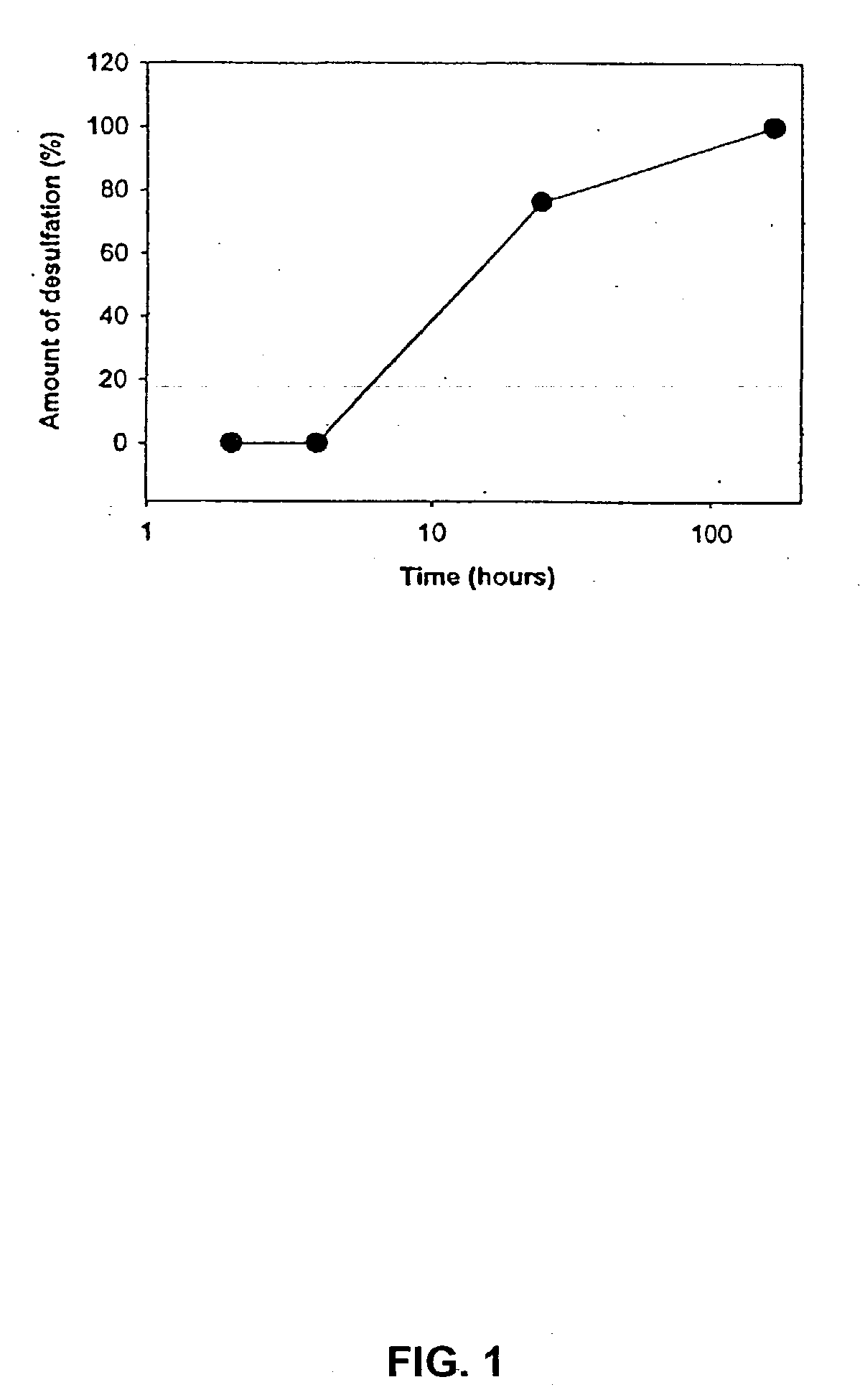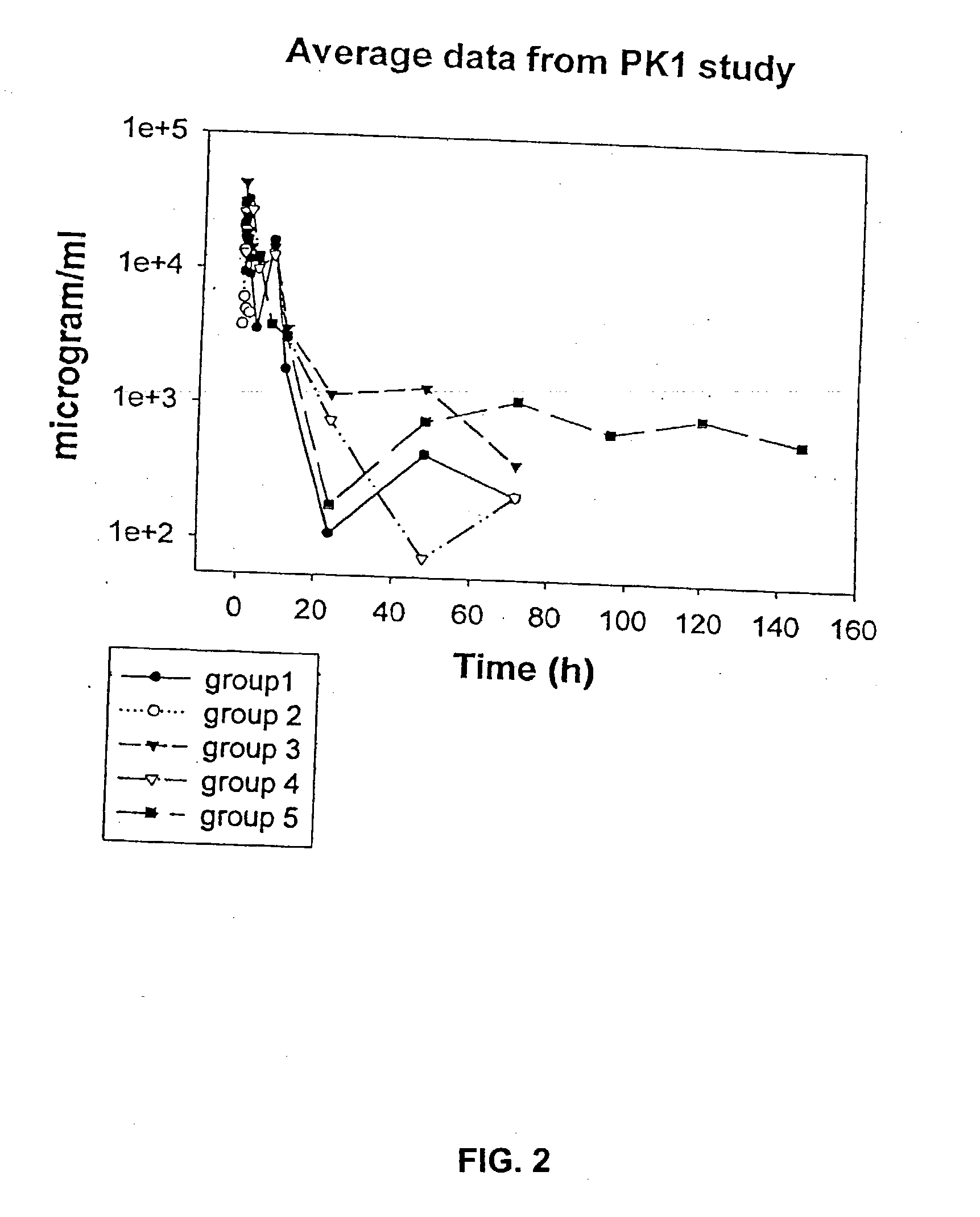Antimicrobial charged polymers that exhibit resistance to lysosomal degradation during kidney filtration and renal passage, compositions and method of use thereof
a technology of lysosomal degradation and charged polymers, which is applied in the field of preventing or treating microbial infections in mammals using sulfated polysaccharides, can solve the problems of poor activity of known compounds, and inability to carry out in vivo treatment. to achieve the effect of minimizing the spread or worsening of diseas
- Summary
- Abstract
- Description
- Claims
- Application Information
AI Technical Summary
Benefits of technology
Problems solved by technology
Method used
Image
Examples
working examples
6. WORKING EXAMPLES
[0187] The following examples are for the purpose of illustration only and are not intended as limiting the scope of the invention.
example 1
6.1 Example 1
Synthesis of a Sulfated Dextran Having a Sulfation of 9.5%
[0188] Dextran T20 (average molecular weight 20,000) was dried in vacuo at 60.degree. C. overnight. The dried compound (100 g) was dissolved in 640 ml formamide (FA). Chlorosulfonic acid (CSA) 80 ml was added to FA 200 ml at a maximum of 45.degree. C. in a 3-necked flask, then cooled in ice-water. The amount of CSA determines the ultimate sulfation of the sulfated dextran (180 ml CSA to 200 ml FA yields approximately 17% sulfur). The CSA / FA mix was slowly added (over two hours) to the dextran at a temperature of 40.degree. C. After all of the CSA / FA was added, the mixture was stirred for 15 minutes at a temperature of 45.degree. C. The mixture was cooled to 25.degree. C. and 28% NaOH was added slowly to give a pH 7.5-8.5 with a maximum temperature of 50.degree. C. For the first precipitation, 3 L of ethanol were added with stirring. Stirring was stopped and the mixture was allowed to stand. The supernatant was de...
example 2
6.2 Example 2
Periodate Oxidation
[0189] Following the modified method of Smith degradation used by Sandy J D, Biochem J., 177: 569-574, 1979; chrondroitin sulfate (240 mg) was dissolved in 0.25M NaClO.sub.4 (47 ml) at room temperature. 5 ml of 0.5 M NaIO.sub.4 was added and KOH was used to adjust the mixture to pH 5. The reaction was allowed to proceed in the dark for 72 hours. The mixture was then dialysed in visking tubing to remove the periodate.
PUM
| Property | Measurement | Unit |
|---|---|---|
| molecular weight | aaaaa | aaaaa |
| time | aaaaa | aaaaa |
| molar ratio | aaaaa | aaaaa |
Abstract
Description
Claims
Application Information
 Login to View More
Login to View More - R&D
- Intellectual Property
- Life Sciences
- Materials
- Tech Scout
- Unparalleled Data Quality
- Higher Quality Content
- 60% Fewer Hallucinations
Browse by: Latest US Patents, China's latest patents, Technical Efficacy Thesaurus, Application Domain, Technology Topic, Popular Technical Reports.
© 2025 PatSnap. All rights reserved.Legal|Privacy policy|Modern Slavery Act Transparency Statement|Sitemap|About US| Contact US: help@patsnap.com



